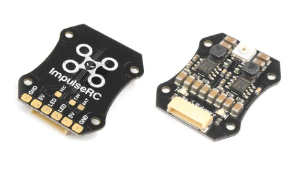Four common methods for analyzing circuits
Electronic circuit diagrams are used to represent the composition, structure, nominal value of components and other information of actual electronic circuits. The actual circuit situation can be known through the circuit diagram. In this way, when we analyze the circuit, we don’t have to turn the physical object over and over again, but just take a drawing. When designing the circuit, we can also calmly do it on paper or on the computer, confirm the perfection before actually installing it, and debug and improve it until it succeeds. We can also use advanced computer software to assist in circuit design, and even conduct virtual circuit experiments, which greatly improves work efficiency.
The four common methods for analyzing circuits are summarized for everyone, as well as the circuit types and analysis steps suitable for each method.
1.Time constant analysis method
The time constant analysis method is mainly used to analyze the properties of the circuit composed of R, L, C and semiconductor diodes. The time constant is a parameter that reflects the speed of energy accumulation on the energy storage element. If the time constant is different, although the form and connection method of the circuit are similar, the role played in the circuit is different. Common ones include coupling circuits, differential circuits, integral circuits, clamping circuits and peak detection circuits.
2.Frequency characteristic analysis method
The frequency characteristic analysis method is mainly used to analyze whether the frequency of the circuit itself is compatible with the frequency of the signal it processes. In the analysis, its center frequency, upper and lower limit frequencies and bandwidth should be simply calculated. Through this analysis, the properties of the circuit, such as filtering, notching, resonance, frequency selection circuit, etc., can be known.
3.DC equivalent circuit analysis method
When analyzing the circuit principle, it is necessary to clarify the DC path and AC path in the circuit. The DC path refers to the static bias of each semiconductor triode and integrated circuit when there is no input signal, that is, their static operating point. The AC circuit refers to the path for AC signal transmission, that is, the origin and development of the AC signal.
In actual circuits, AC circuits and DC circuits coexist in the same circuit. They are both interconnected and distinguished from each other.
The DC equivalent analysis method is a method of analyzing the DC system of the analyzed circuit separately. When performing DC equivalent analysis, the circuit’s processing function for the input AC signal is completely ignored. Only the static DC current and voltage directly caused by the DC voltage of the power supply and their mutual relationship are considered.
When performing DC equivalent analysis, the DC equivalent circuit diagram should be drawn first. When drawing the DC equivalent circuit diagram, the following principles should be followed: capacitors are all treated as open circuits, inductors whose DC resistance can be ignored should be regarded as short circuits, and inductors whose resistance components cannot be ignored can be equivalent to resistors. The voltage after step-down decoupling is taken as the power supply voltage of the equivalent circuit; the semiconductor diode in the reverse bias state is regarded as an open circuit.
4.AC equivalent circuit analysis method
The AC equivalent circuit analysis method is a method of separating the AC system in the circuit from the circuit and analyzing it separately.
When performing AC equivalent analysis, the AC equivalent circuit diagram should be drawn first. When drawing the AC equivalent circuit diagram, the following principles should be followed: the power supply is regarded as a short circuit, the capacitors of the AC bypass are all regarded as short circuits, and the DC isolation couplers are all regarded as short circuits.







